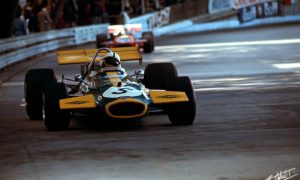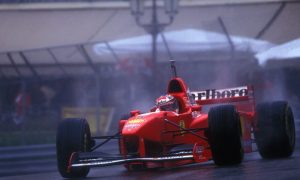A LIFE SPLIT BETWEEN THE CIRCUIT AND THE FACTORY
While Rocquelin’s job entails coordinating the engineers’ work at the track to extract the maximum performance out of the car, his mission actually begins much before the race with studying heaps of data from Milton Keynes’ computers.
“Essential car setups are based on what we learnt the previous year and what we’ve gathered from the first few races of the season. At the factory, both drivers work in the simulator to assess different options. On race week Thursdays, I am in charge of defining the programme for our running, taking into account the upgrades we might have, the goals we look to achieve, etc. Then the action finally gets underway.”
Using a methodical approach, the team fine-tunes the setups as the weekend unfolds.
“Everybody uses their own processes, but in my opinion you should be able to build anything using the tools you have at your disposal. We all have good days as well as bad ones, but it’s very short-term to only try something that might randomly work. You’d better be systematic. We tried this and that did not work. Next time, we’ll try that, and we’ll perhaps see a trend emerge.
“Compared to a race engineer, who is always focussed on his driver and his car, the head of race engineering gets two feedbacks, which can be more or less diverging, on how the chassis behaves and must combine both.”
Rocquelin acts as a middleman between the factory and the track, as he tries to accommodate the immediate time of racing with the longer period of conception and design.
After each Grand Prix, he writes a one- or two-page long report that summarises how the weekend went, using numbers, team results, gap to the rivals, noticeable improvements, and issues that have surfaced.
“We hold a meeting with each department after the race, focussing on the essential. The information is available thanks to autosave systems that compile telemetry data, or thanks to the drivers’ post-session feedbacks. My job is to prioritise targets from this mass of data and to sum it up in two or three key figures so that we can allocate the right resources on solving such or such problem.”
Less restricted by short-term goals, the chief engineer works in close conjunction with the design office in order to steer future developments. He is less interested in car setups than potential upgrades that will improve the overall concept behind the car.
“Compared to a race engineer, who is always focussed on his driver and his car, the head of engineering gets two feedbacks, which can be more or less diverging, on how the chassis behaves and must combine both. From two very different remarks, he will identify a common issue and offer suggestions to the factory, with both drivers reaping the benefits in the end.”









